 |
 |
 |
| |
Antiretroviral treatment use and HIV RNA suppression rates for 941 European patients in the etravirine early access programme
|
| |
| |
Reported by Jules Levin
9th International Congress on Drug Therapy in HIV Infection, Glasgow, UK, 9-13 November 2008
Eric Florence,1 Stephane De Wit,2 Antonella Castagna,3 Esteban Ribera,4 Andrew Hill,5 Hilde Vanaken,6 Yvonne van Delft,7 Stephan Marks7
1Prince Leopold Institute of Tropical Medicine, Antwerp, Belgium; 2St Pierre University Hospital, Brussels, Belgium; 3Department of Infectious
Diseases/RCCS, Fondazione San Raffaele del Monte Tabor, Milan, Italy; 4Hopital Vall d'Hebron, Barcelona, Spain; 5University of Liverpool,
Liverpool, UK and Tibotec BVBA, Mechelen, Belgium; 6Tibotec R&D, Mechelen, Belgium; 7Janssen-Cilag B.V., Tilburg, The Netherlands
Author Conclusions
ETR has been used with a wide range of ARVs in the early access programme in Europe
In the overall cohort (N=941), the per cent of patients with HIV RNA <50 copies/mL increased from 15% at baseline to 74% at Week 24 (observed data)
In a pre-planned substudy, the cohort of 176 patients who took ETR, DRV/r and raltegravir showed strong efficacy - 93% had HIV RNA levels below 400 copies/mL by Week 24, with 70% showing HIV RNA <50 copies/mL at this time
It is difficult to reliably evaluate efficacy by use of different ARVs in the early access cohort, since baseline drug resistance data is not available and there is minimal data collection in this very diverse patient population
Abstract
The next-generation NNRTI etravirine (ETR; TMC125) has shown strong and durable efficacy in the DUET trials in combination with a background regimen (BR) of darunavir with low-dose ritonavir (DRV/r), NRTIs and optional enfuvirtide (ENF). The early access programme included a wider range of BR.
The TMC125-C214 trial (ETR early access programme) included patients with triple-class experience (NRTI, protease inhibitor [PI], NNRTI) and who were unable to use currently approved NNRTIs owing to either intolerance or drug resistance.
Patients were recruited from 10 countries in Europe. Patients received ETR 200mg bid with a range of background antiretrovirals (ARVs). By 2 May 2008, there were 941 European patients with data available: 21% were female, 87% were Caucasian, with a mean age of 46 years.
The baseline mean CD4 cell count was 299 cells/uL (range 0-1,647) with
baseline mean HIV RNA 4,677 copies/mL (range 40-3,263,277). Overall,
69.8% used DRV/r. 70.6% patients used NRTIs in the BR.
Of the 664 patients using NRTIs, the most common were tenofovir (70%), lamivudine or emtricitabine (91%), zidovudine (20%) and abacavir (18%). Other ARVs used included raltegravir (54%) and maraviroc (15%).
The percentage of patients with HIV RNA <50 copies/mL was 51% at Week 4, 70% at Week 12 and 74% at Week 24 (observed data analysis). CD4 cell counts rose by mean 79 cells/uL at Week 12 and by 101 cells/uL at Week 24.
There were 131 serious adverse events (SAEs) recorded, of which 118 (89%) were judged to be not related to ETR or doubtful causality. There were 13 SAEs
judged to be at least possibly related to ETR. Of these, there were five (0.6%) cases of rash (ETR permanently stopped for four of the cases), one elevation of alanine aminotransferase (ALT) levels (0.1%) (ETR dose not changed) and one case of cholestatic acute hepatitis (0.1%) (ETR dose not changed).
The use of ETR in the early access programme included a wide range of ARVs in the BR, with a high percentage of patients showing HIV RNA suppression below 50 copies/mL by Weeks 12-24.
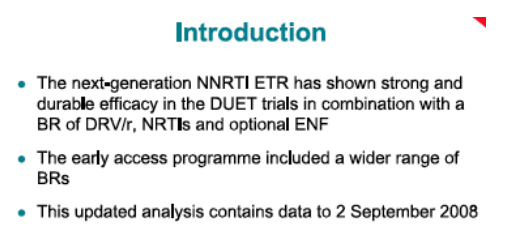
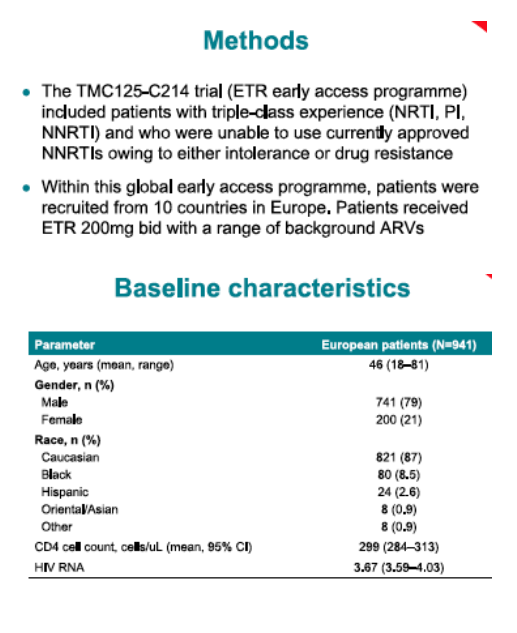
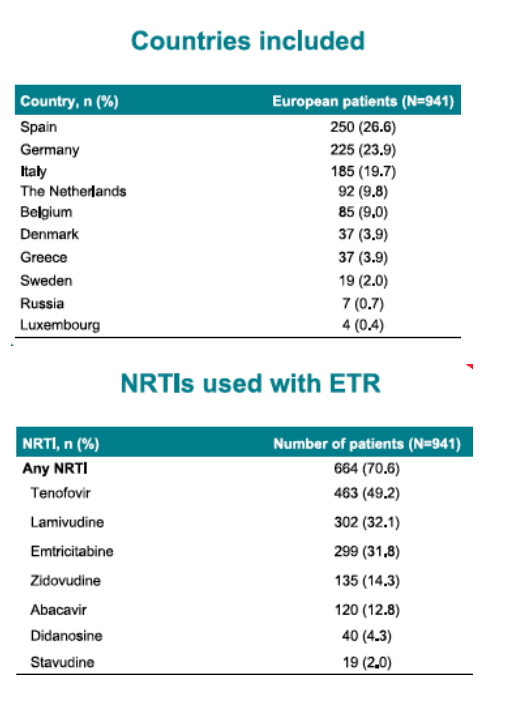
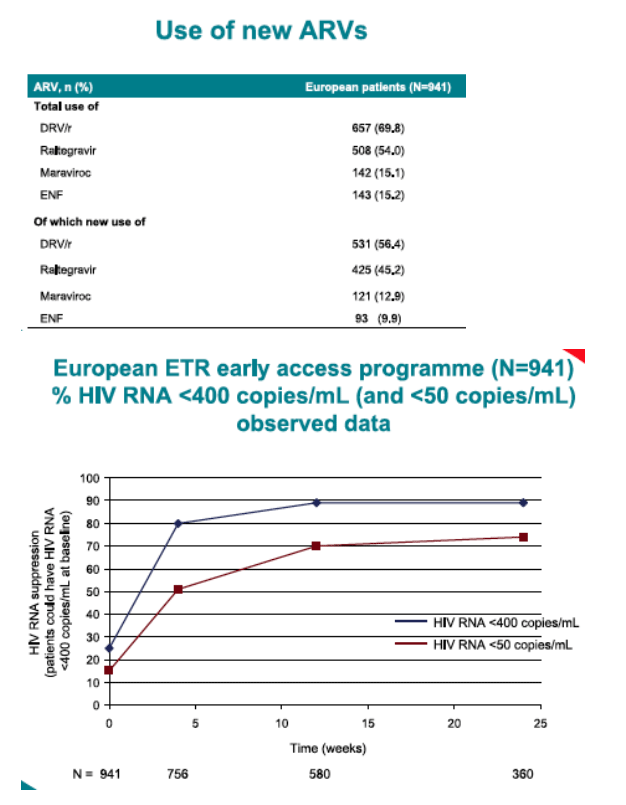
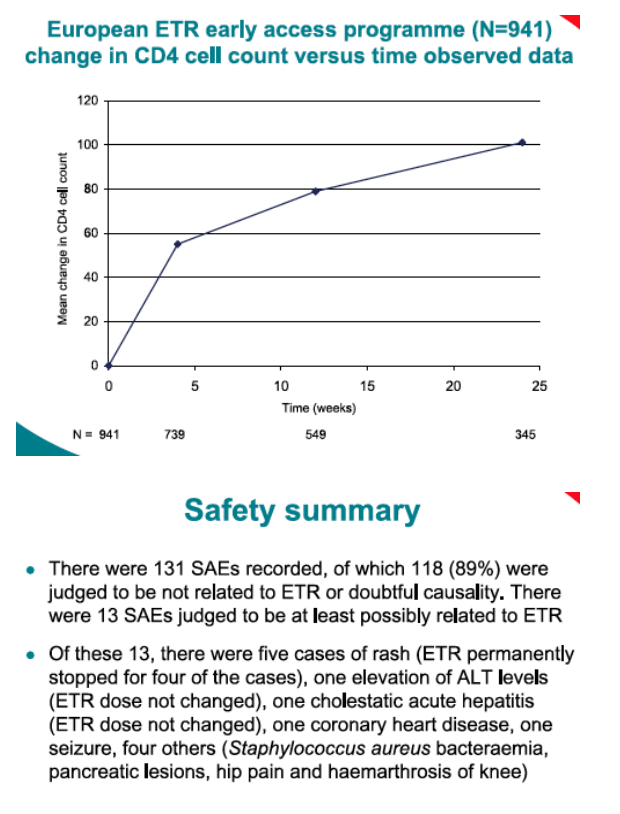

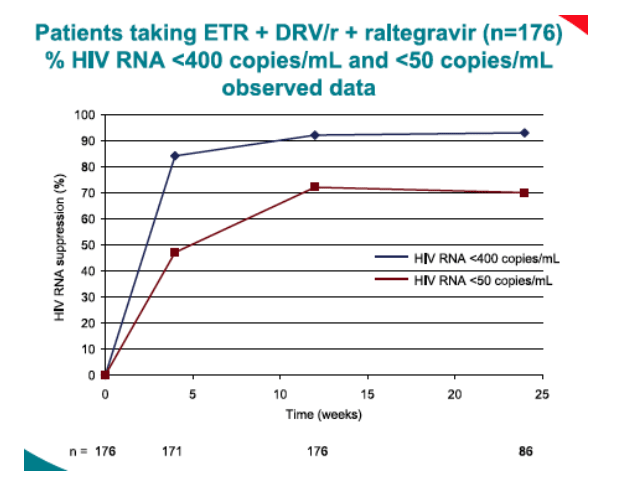
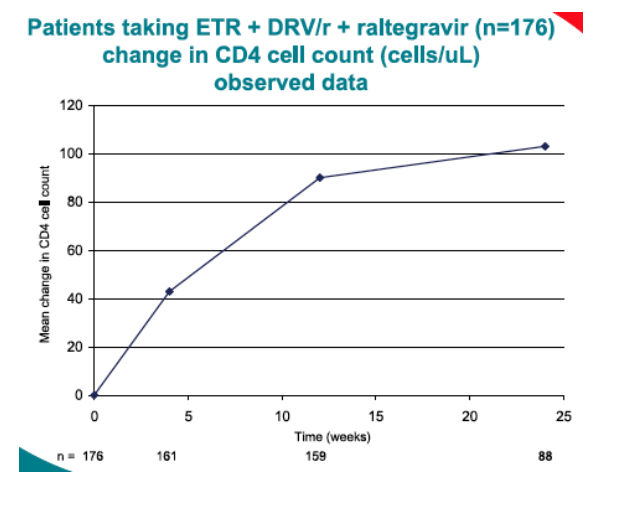
|
| |
|
 |
 |
|
|